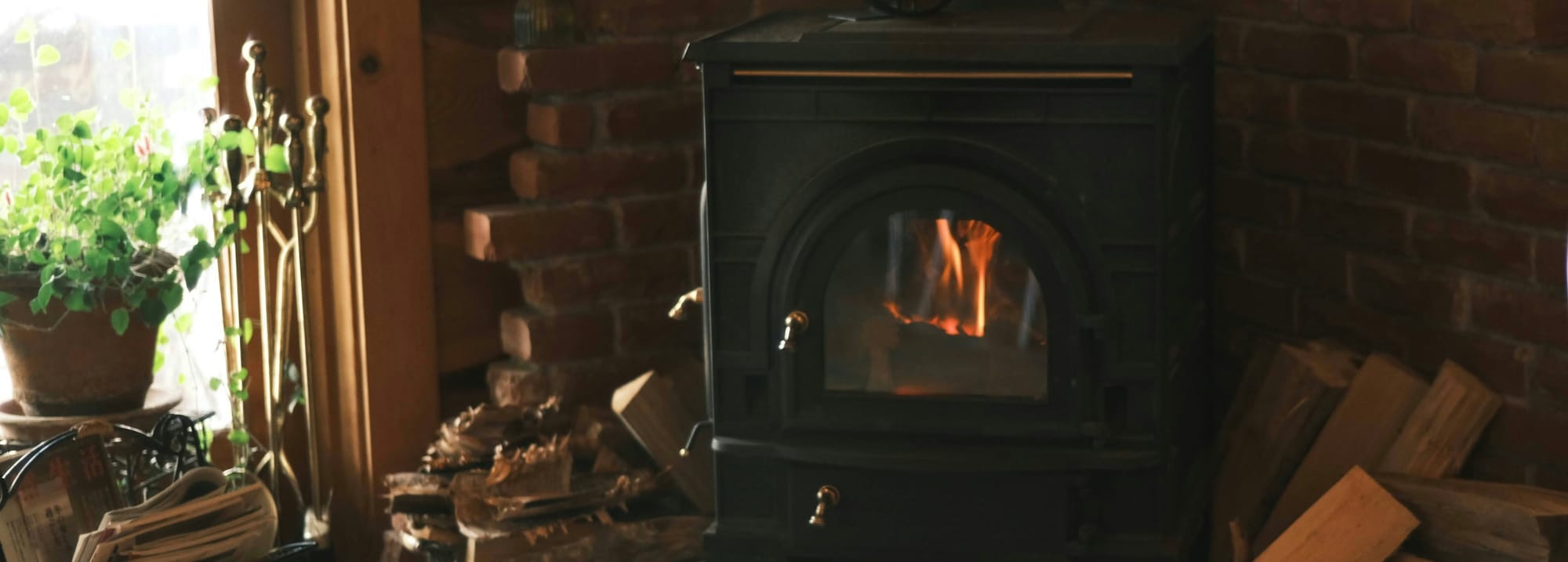Wood Heat
Heating with wood is a complex business . . . one manufacturer described the process as more art than science.

We have been making a serious effort to heat with wood this year. It is a small cabin and if we didn’t cut anything down we could probably stay ahead of our requirements relying exclusively on what falls in passing storms—two trees so far this winter, already. The wood is not the best. Often, disease contributes to the collapse. But it burns and heats. And the price is right.
Heating with wood is a complex business. Conducting additional research on our stoves at the start of the season, one manufacturer described the process as more art than science. We identify with that now. For starters, there are the different kinds of wood to consider. We have mostly oak, beech, maple, some birch, and plenty of pine. The usual for these parts. A great deal of what falls is pine. We are burning a batch of it for the first time this year after two years of seasoning. Another medium-sized pine uprooted in the high winds that went through a week ago. We will cut it up, stack it to the side, and have it for kindling when it is dry.
Beech is not especially competitive in our woods. It dominates the understory until crowded out by oak and pine. Birch litters the ground, mostly gone by, and not worth splitting. But the bark makes an aesthetically pleasing, waterproof covering for the stacked wood. Oak is the champion, followed by maple. They topple less frequently, so we cut more of them, which makes room for promising young adults.
We have two wood stoves. One is a Fisher, a plain, cast iron box. No windows. No jewelry. If it was not already posted to our basement it would be working for the railroad, powering a steam engine. It is an overachiever, delighting in work, with a bias for results. Upstairs is the Vermont Castings unit, our princess. Two doors, a lovely window, plenty of shiny brass hardware, a removable ash tray, and—importantly—a catalytic converter, which is little like endowing a wood stove with a uterus. It burns the smoke and breaks down other byproducts of the fire before exhausting the result up the chimney. And it is fussy. It requires warming to a high temperature and wood at the proper humidity. With that, it is still hit or miss; probably, because we are not so artful at present. The fire will occasionally burn too slowly and the window display a sooty dissatisfaction, forcing us to disengage the converter by opening the damper until the moment seems right again sometime later on.
The real complexity associated with our transition to wood is agreeing on how to configure the house during the day. We have lost our heating zones created by the basement pipes that extend in all directions. There are only a few such zones but we have more appreciation for their significance today. I argue for leaving the bedroom doors, and such, open, allowing stove heat to reach every extremity. Unquestionably, this results in an uneven level of comfort, with places near the fires warmer by several degrees—more explicitly, places farther from the fires, colder. But, I argue, colder or not, it reduces our dependence on nonrenewable resources and saves money.
My wife is more dependent on heat and contends that closing doors to the other rooms improves the comfort level in the primary living space, which is what matters. Opening the doors siphons heat from where it matters without doing much for the cold corners of the building where it matters less.
Yes, but cold or not, the corners are still warm enough to prevent the furnace from kicking on.
Shut the doors and the furnace will have only a small job heating a few small rooms. And we can be warm where we are.
Maybe we move to the basement with the Fisher stove where it is more than comfortable and rely on the rising hot air, plus radiant heat in the floor, to keep upstairs modestly comfortable until, like, we need to be upstairs for other reasons.
I’m not moving to the basement.
What about the loft? The loft is really warm. Let’s sit in the loft. It’s the perfect winter room.
You go sit in the loft. I’m turning up the heat in the kitchen.
Published in The Monadnock Ledger-Transcript, January 21, 2025

